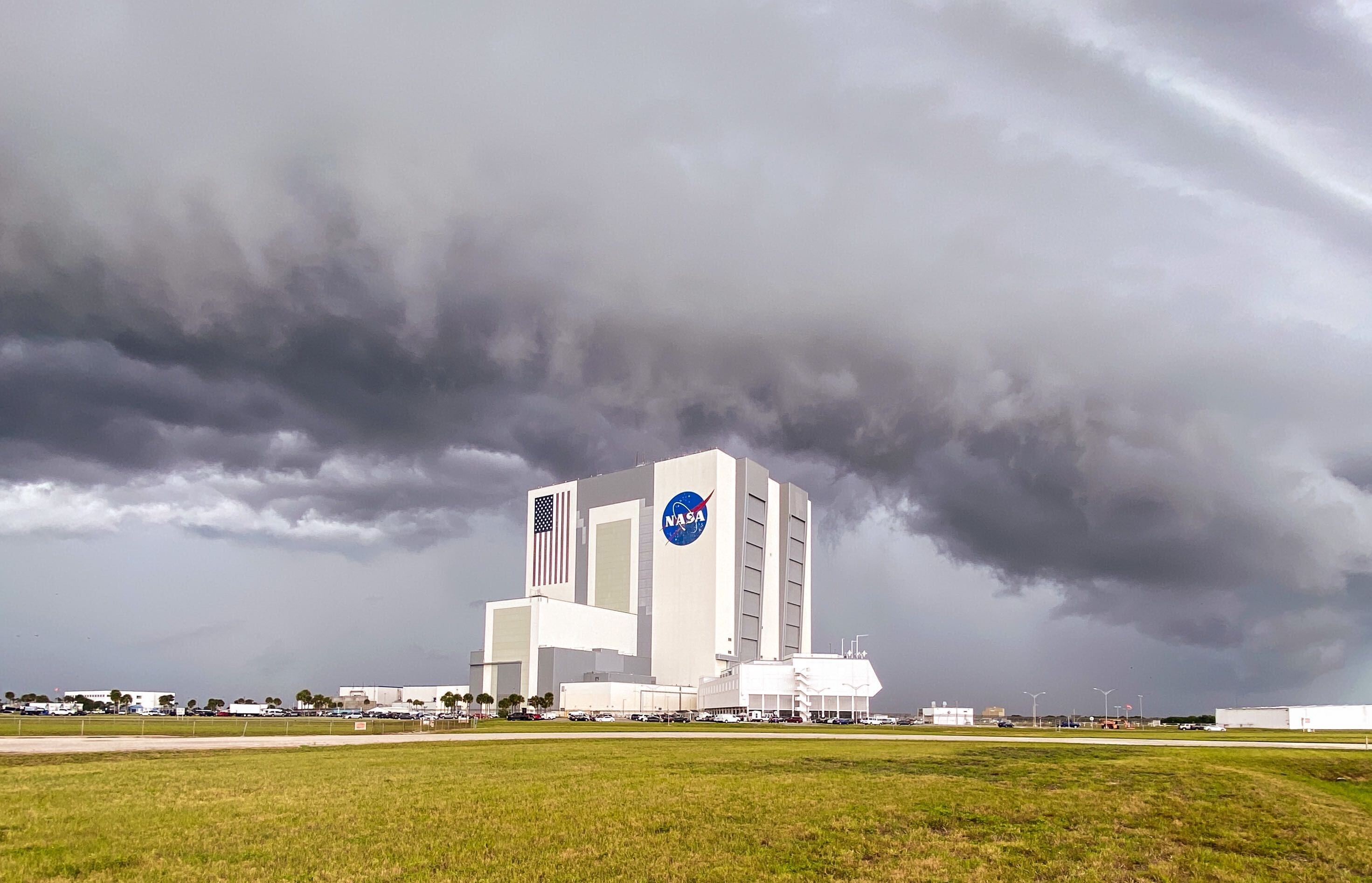
Trevor Mahlmann
Poor weather scrubs SpaceX’s historic launch attempt [Updated]
Anyone who followed the space shuttle program will remember a lot of scrubs.
by Eric Berger4:20pm ET Wednesday: SpaceX scrubbed the launch of its Falcon 9 rocket and Crew Dragon spacecraft Wednesday a little less than 17 minutes before liftoff. Although weather conditions were improving at the launch site—thunderstorms rolled through earlier in the day, and a tornado warning was issued for Kennedy Space Center—they did not improve fast enough. Had Dragon been able to launch 10 minutes later, the weather would have been good to go.
Informed of the scrub, Dragon's commander Doug Hurley said from inside the spacecraft, "It was a good effort by the teams, and we understand. Everybody’s probably a little bit bummed out. It’s just part of the deal."
There were no technical issues with Dragon or the rocket. Now SpaceX will work to recycle the systems for another launch attempt on Saturday at 3:22pm ET (19:22 UTC). The reason for skipping the next two days is an unfavorable phase angle for Dragon's approach to the International Space Station. Weather is forecast to be somewhat better on Saturday, but it is no slam-dunk. A back-up opportunity will be available on Sunday.
Original post: Now that humans are about to lift off from the United States into orbit again, the constraints surrounding launch weather are heightened. To that end, we're watching conditions closely today in advance of a historic launch of a Falcon 9 rocket and Crew Dragon spacecraft at 4:33pm ET (20:33 UTC).
This will be the first launch of humans into orbit from the United States since the space shuttle retired in 2011, and people who remember that program will recall plenty of scrubs. For today's mission, we need to track weather both at the launch site for liftoff, and down range in case of potential emergencies with the rocket during the countdown or after it launches.
Launch site weather
For Kennedy Space Center and SpaceX's Launch Complex 39A, there are 12 different criteria near the pad that must be met before a launch can proceed. These include sustained winds of 30mph or below, no anvil thunderstorm clouds within 10 nautical miles, and various rules about clouds.
When the 45th Space Wing at Patrick Air Force Base in Florida provides the official forecast for a launch, it is basing its percentage solely on conditions for a particular rocket and weather at the launch site. This morning's updated forecast for today's launch attempt of SpaceX's Crew Dragon is decent, with a 50 percent chance of "violating weather constraints" at the time of launch.
However, this forecast does not include several other important considerations, most notably ascent abort weather. This is a really big concern today with the formation of Tropical Storm Bertha off the coast of South Carolina and unsettled weather in Dragon's path.
A complicated analysis
When the Falcon 9 rocket launches, there is a small probability of an issue with the rocket. Therefore the Crew Dragon spacecraft has a launch escape system, which SpaceX successfully tested in January. In case of an emergency, Dragon's SuperDraco thrusters fire instantaneously to pull the spacecraft away from the rocket.
At this point, the capsule rises toward an apex and then begins falling back toward the Earth. Because it takes a little more than eight minutes for the rocket's first and second stage to reach orbit—and an emergency is theoretically possible all along the way—it is possible for Dragon to come down over the Atlantic Ocean anywhere between Florida and Ireland.
Weather is important for an abort scenario for several reasons. One is rainfall, as too much precipitation would impair the ability of Dragon's four main parachutes to bring the spacecraft down. Additionally, recovery operations need relatively calm sea states to safely bring the spacecraft onto SpaceX's GO Searcher recovery ship.
This week, NASA officials said they will monitor about 50 sites along Dragon's track for weather conditions. However, some will be weighted more than others. SpaceX has developed a model that looks probabilistically at many locations off the US East Coast. Some points are weighted significantly higher, such as an abort related to a staging failure, in the final analysis.
Weather scrubs
Anyone who followed the space shuttle program will remember a lot of scrubs due to poor weather. The space shuttle did not have a launch escape system, but more than half of missions scrubbed at least once due to weather. This is because the shuttle not only had its own weather rules, it also had "Transoceanic Abort Landing" sites, in the Azores, Spain, and France. A handful of these locations had to have clear weather for a launch to proceed.
So when it comes to human launches in the future, weather will be a major factor going forward for NASA and SpaceX.